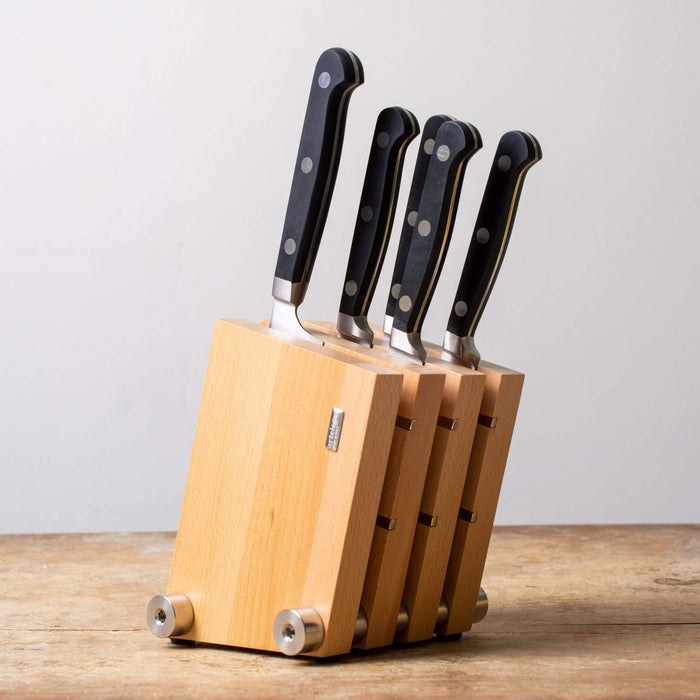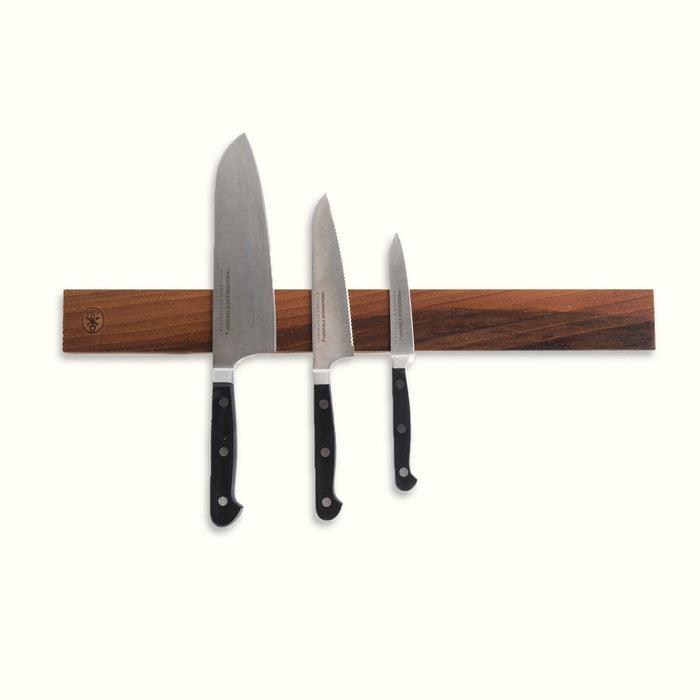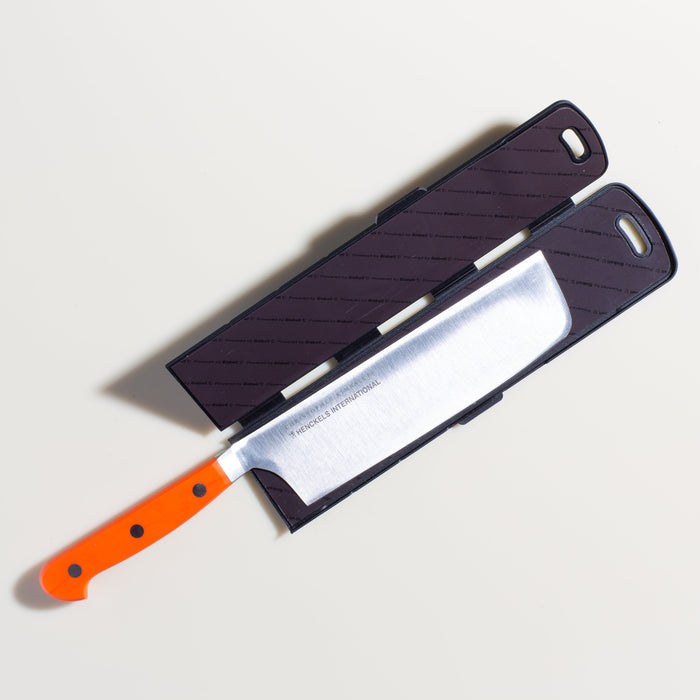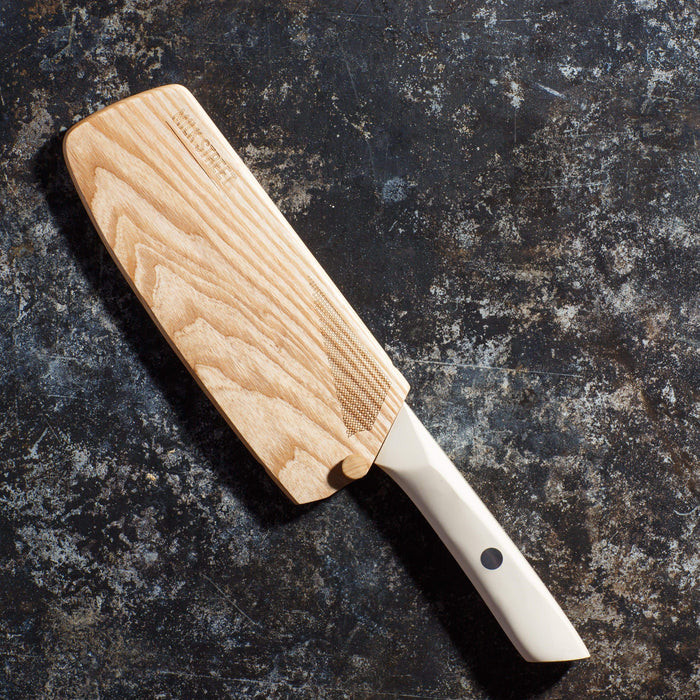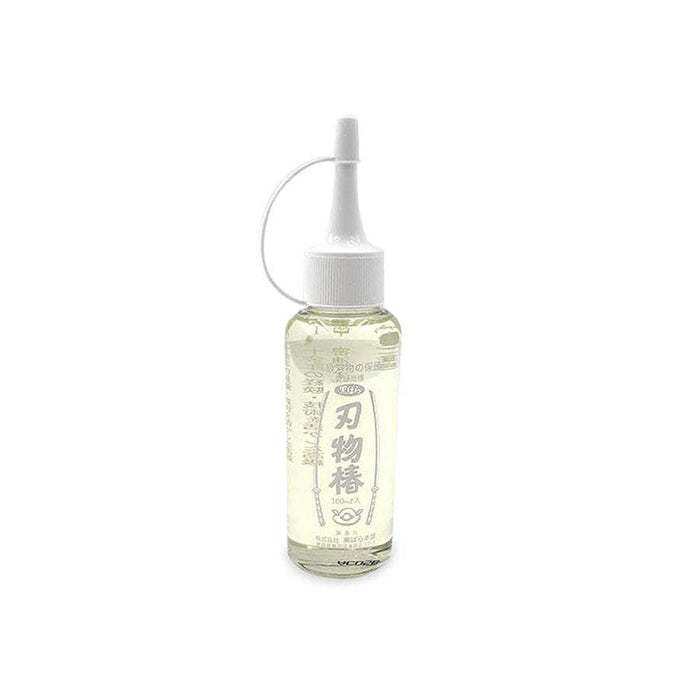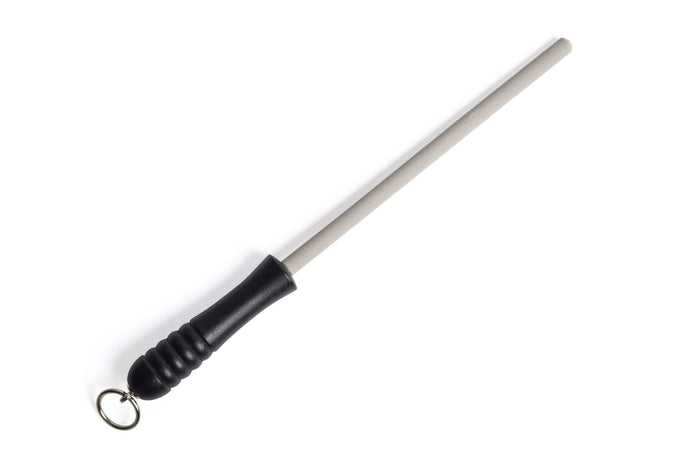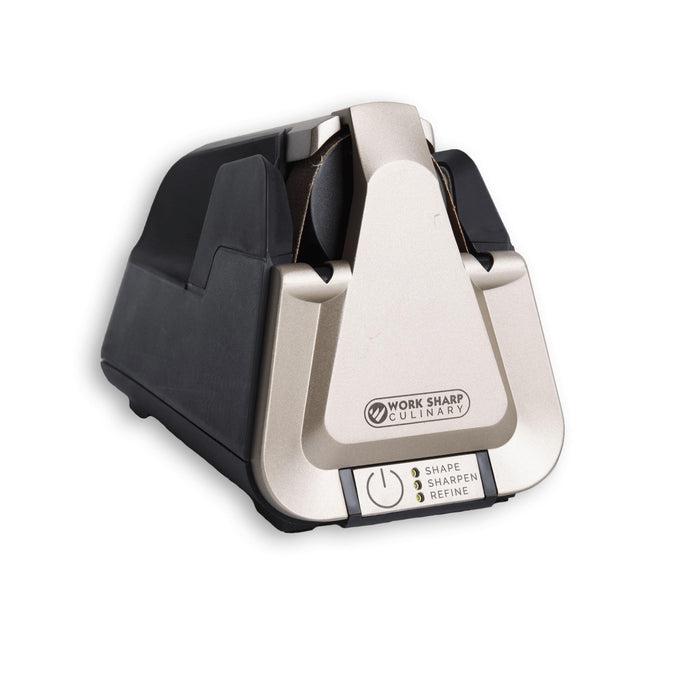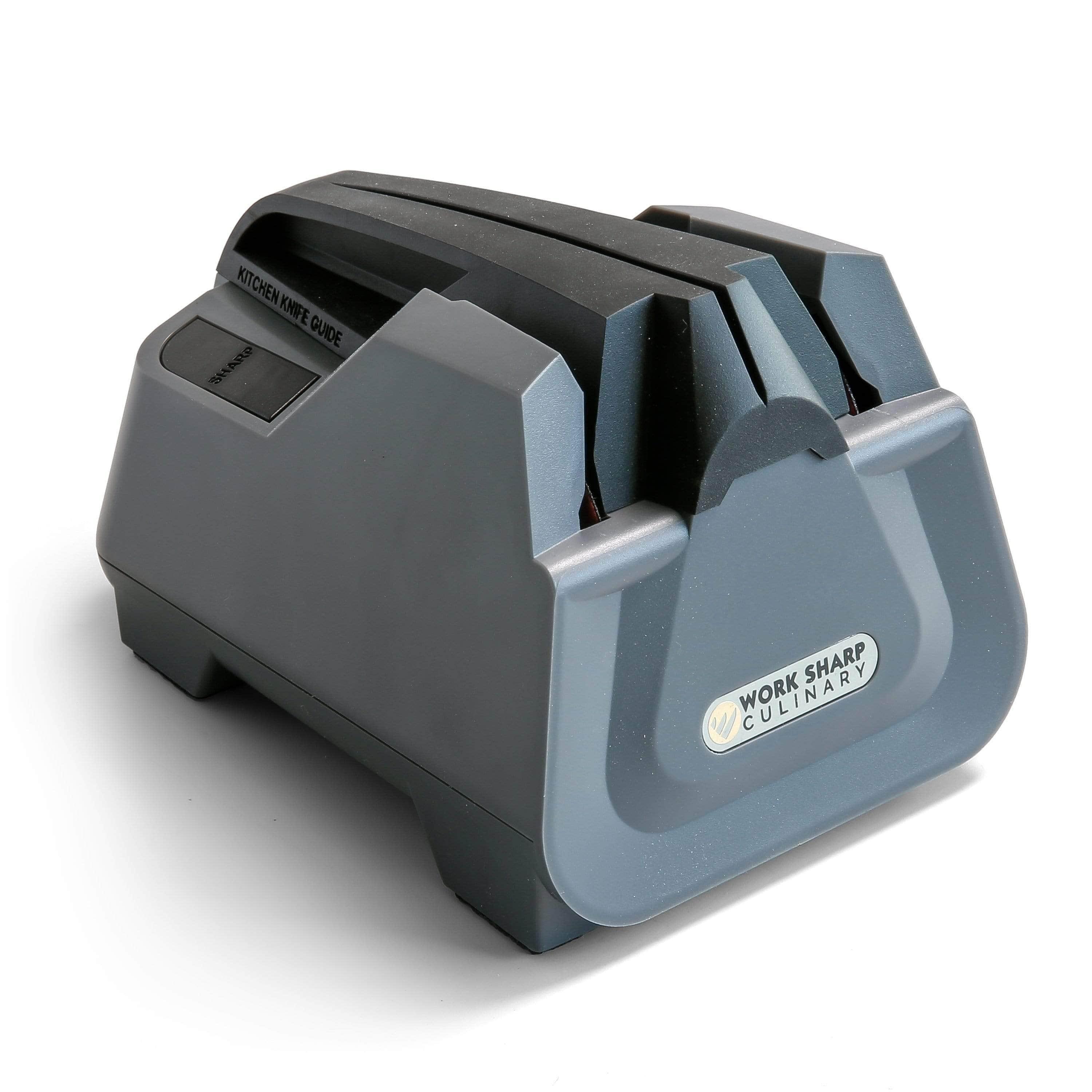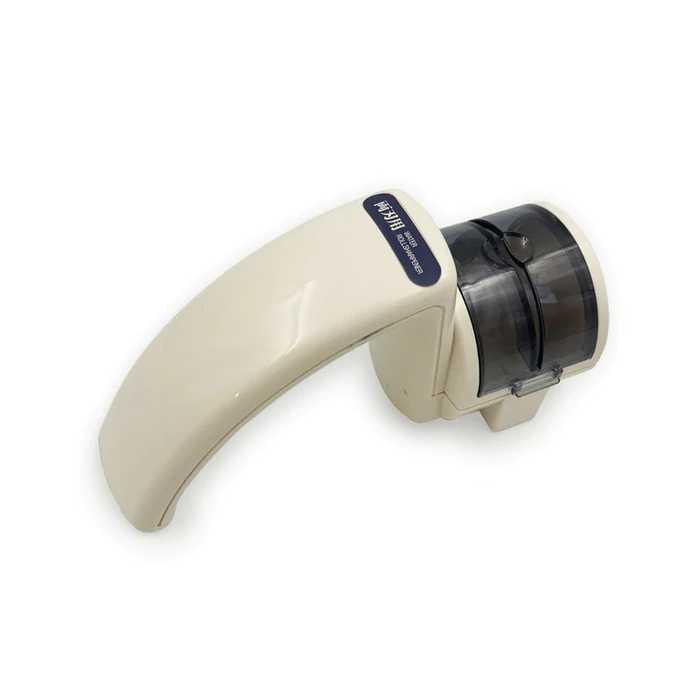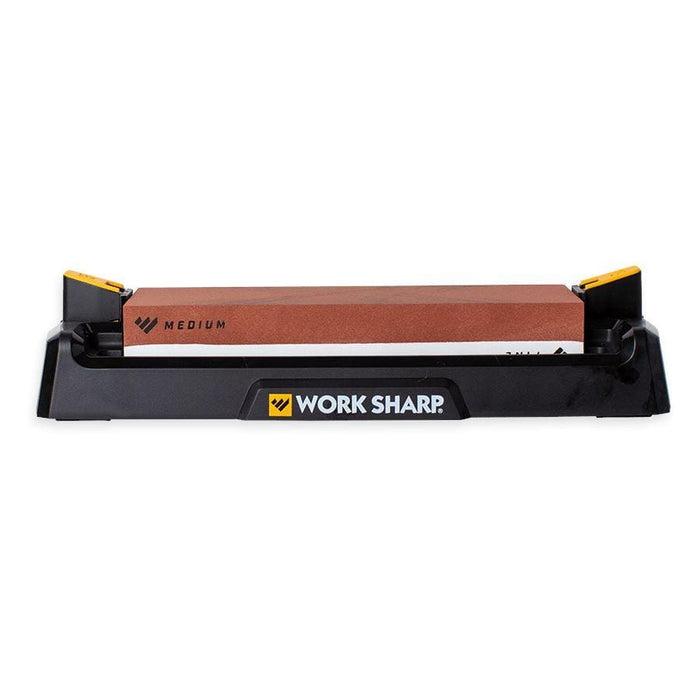Like death and taxes, dull kitchen knives are an inevitability. I’ve got $500 knives that I’ve used to the point that they can barely cut butter. Here’s the basics for how to keep your knives sharp for longer and bring that edge back once it needs it.
How Do I Test My Knives for Sharpness?
Take a sheet of paper, hold one end between your thumb and forefinger, and then try to slice down through the paper, starting an inch or two away from your fingers. If it slices easily, your knife is sharp. If it catches and tears, your knife is dull.
Knives dull because the fine, leading edge of the blade eventually curls over on itself, leading to a knife that smashes tomatoes, mushes meat and can literally make you cry—a dull knife releases far more of the sulfurous compounds in onions that irritate your eyes. A dull knife also is potentially dangerous, as it can glance off onions or carrots, sending the blade skittering toward your fingers.
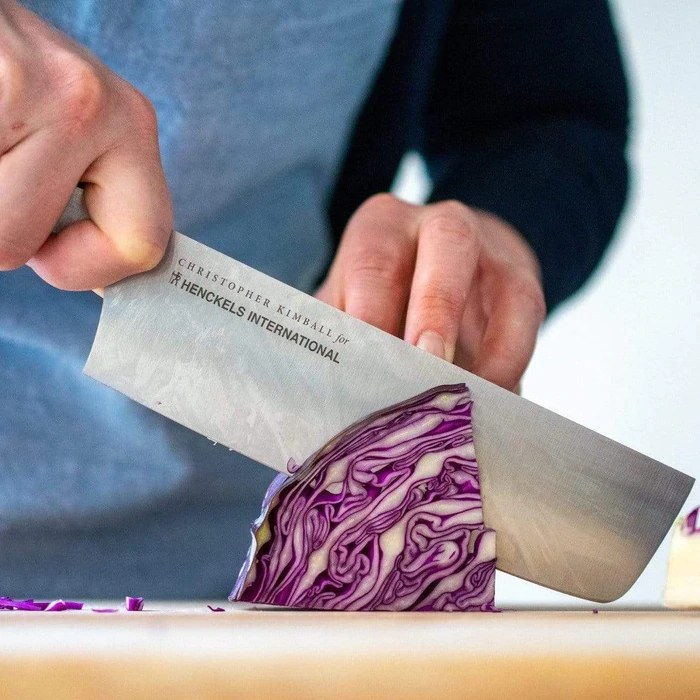
How Quickly Can A Knife Lose Its Edge?
In seconds. A blade’s leading edge is only microns thick and, despite being ground fine from hardened steel, is fragile. Here are a few tips for keeping your knives sharp:
Wash By Hand: Never use a dishwasher, which can deteriorate blade steel.
Avoid Hard Cutting Boards: Hard surfaces dull knives quickly. Avoid plastic, glass and bamboo – use soft woods or cushioned boards. Our favorite board is the grippy rubber-topped, wood core model from Hasegawa. Nearly identical to the boards used by sushi chefs for their thousand-dollar knives, they provide the ideal surface for slicing and dicing and are easy to clean. An alternative would be a wooden one from J.K. Adams, which has separate sides for meat and veggies (each marked with their own icon: a small chicken or a bundle of carrots) to help mitigate cross-contamination and streamline prep work.
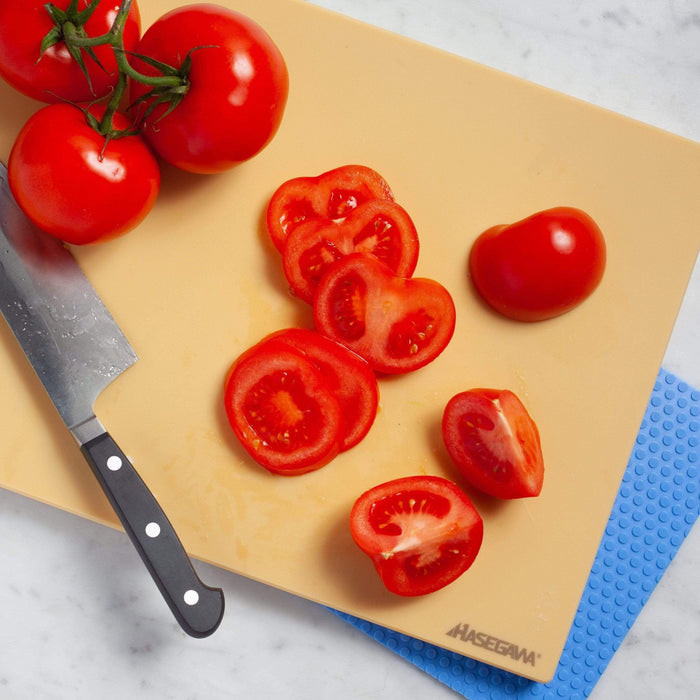
What’s the Best Way to Store Knives?
Don’t store them loose in a drawer where the blades can bang together and potentially dent or chip. We like magnetic knife blocks or bars, which secure the blades and allow air flow to prevent oxidation. For those lacking counter space or wall space to mount a magnet bar, the best alternative are knife guards, which clamp around the blade for safe storage in a drawer or for transport.
Magnetic knife guards like this one from Bisbell fit tight to the blade and can be cut to fit knifes of nearly any size. Snap it on the blade and tuck into a drawer without worrying that it will rattle around and get damaged.
Japanese knives are traditionally fitted with wooden scabbards called saya. We designed a custom wooden knife guard to fit our large-bladed Kitchin-to.
Shop Our Knife Storage Essentials Here
Why Do Some Knives Rust?
Stainless steel, the material of choice for most modern Western knives, is largely impervious to discoloration and rusting. Carbon steel, which many Japanese and older French knives are fashioned from, sharpen more easily than stainless (thanks to the high carbon content) but will rust if left wet or exposed to high-acid ingredients. Each steel still has its benefits, though carbon steels do require a bit more care and won’t remain shiny—they’ll build patina through use like fine leather boots.
To minimize the discoloration of carbon steel and protect against oxidation during storage, we recommend using camellia oil. Wipe the blade with a light coating of the food-safe oil once a week. If the knife does develop rust spots, a rust eraser can scrub it away in moments. Or, try a little baking soda on a moistened scrubber or cork. Bar Keeper’s Friend works as well due to the acid content.
Honing Steels Do Not Sharpen Knives (But You Need One Anyway)
Think of honing as combing your hair whereas sharpening is the full cut and styling. Honing is the action of straightening, or realigning that blade by pushing it against a surface harder than the steel. Sharpening, the act of removing metal from the blade, is required when honing no longer brings the edge back.
Hone your knives almost every time you use them. A few swipes take moments and greatly extend an edge’s lifespan. The goal when using a honing rod is to maintain the angle of the bevel (each side of the blade is ground at a roughly 17- to 20-degree angle) by gently sliding each side of the knife—tip to butt—along the steel a few times (gently is essential! A light touch is all it takes). While metal honing rods are fine, we prefer harder ceramic steels and stock a durable model from Idahone.
It’s the single best investment you can make for knife maintenance.
Shop Our Knife Care Essentials Here
Do Electric Knife Sharpeners Work?
There are sharpening stones, manual pull-through sharpeners and electric sharpeners. Yes, electric sharpeners work and are the recommended method of sharpening for most home cooks.
Electric Sharpeners: We’re particularly fond of Worksharp’s E5 sharpener, which is designed with input from master knifesmiths. It works via flexible abrasive belts, just like professional grinders, and is gentle on blades. The economical E2 model uses abrasive disks. Remember to hone the knife after using an electric sharpener to polish the edge.
Pull-Through Sharpeners: They work via a fixed-angle carbide grinding notch through which the blade is pulled. Most of these sharpeners are designed for thick-blade utility knives and European-style chef’s knives (20 degrees), so they’ll have mixed success with tighter-beveled Japanese knives. For those, we recommend the made-in-Japan Suehiro ceramic pull-through sharpener, which is designed for 17-degree bevels. The sharpener’s ceramic wheels are water lubricated, which means the sharpening is easier on the blade and produces smoother results.
Whetstones: Whetstone sharpening is a bit like driving a manual transmission or tying a Windsor knot: it’s a hard-won skill that’s valuable to master, but it’s up to you if you really need it in your life. That said, absolutely nothing will produce a better edge than hand sharpening once you get the hang of it.
Whetstones are available in a staggering array of styles and prices. We like the basic dual-sided model from Worksharp, which features medium-coarse and fine grinding surfaces, a nonslip base, angle guides and the best part, it's cheap.
The most important thing to remember with whetstone sharpening is maintaining an even bevel on each side of the knife. Wet the stone thoroughly with water. Starting on the coarse side of the stone, slide the blade back and forth the full length of the blade with firm, but not hard, pressure, maintaining the angle (17 degrees for Japanese-style knives; 20 degrees for European-style). Repeat about 10 times on each side. Flip the stone to the finer grit side and polish each side of the blade. Finish with the honing rod and wipe clean before cooking.
